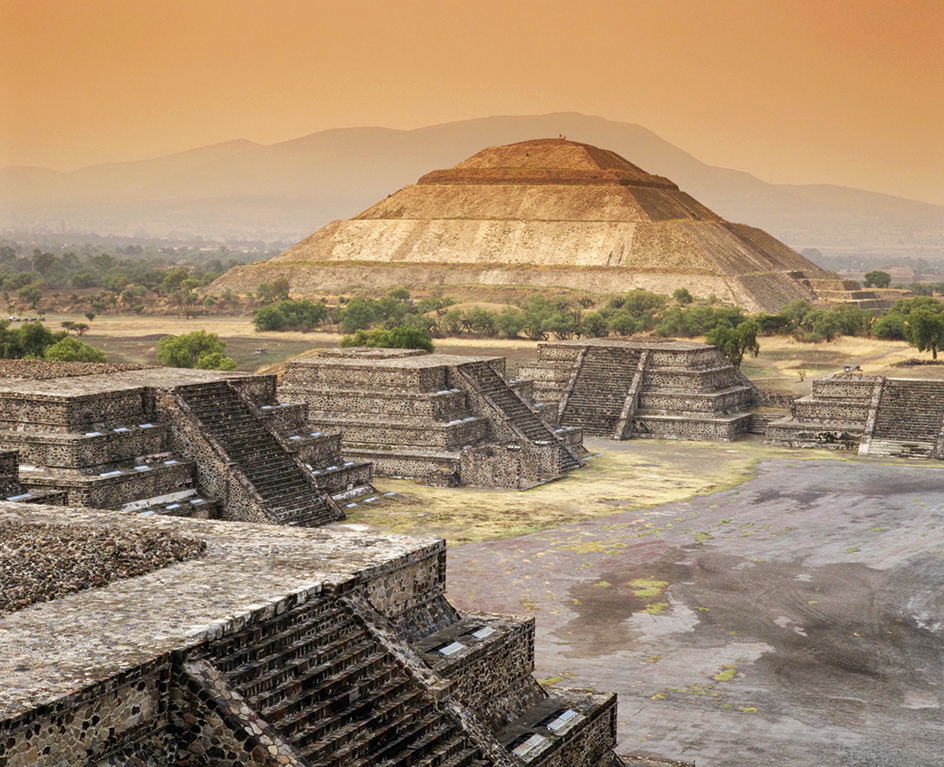Teotihuacán << tay oh tee wah KAHN >> was one of the largest cities of ancient Mexico. Its population probably reached a peak of between 150,000 and 200,000 during the A.D. 500’s. The city’s ruins lie about 30 miles (50 kilometers) northeast of Mexico City.
Teotihuacán covered about 8 square miles (20 square kilometers). The city contained palaces, apartment buildings, a marketplace, and huge pyramids topped with temples. The streets were laid out in a grid pattern. The merchants traded with central and southern Mexico and what are now Belize and Guatemala.

Teotihuacán began as a small farming village. It stood near a cave used for religious ceremonies. By 100 B.C., Teotihuacán’s population had begun to grow rapidly. This growth was due to an increasing number of worshipers at the cave and to the area’s rich deposits of obsidian (volcanic glass), which was used in making tools. About 750, much of the city was burned, possibly during an invasion or a rebellion. After that, the population decreased. The Aztec, who ruled much of Mexico in the 1400’s and early 1500’s, honored Teotihuacán as a religious center.
